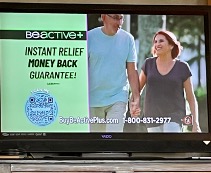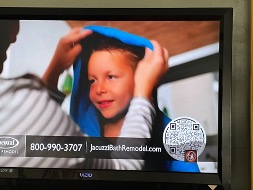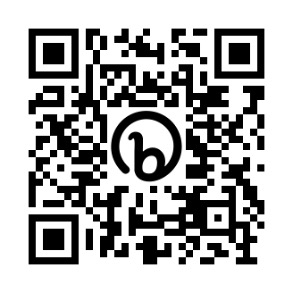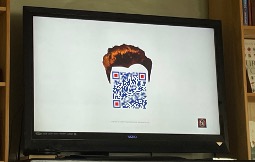Even as the use of QR codes has become normalized thanks to the COVID-19 pandemic, we still see some pretty bone-headed implementations. Some of them are pretty funny.
Granted, marketers are getting better at it—in fact, back in July, my article “QR Codes as a Problem-Solving Tool” covered MindFire’s webinar on great use cases for QR Codes—but there are some best practices that still get overlooked. These are best practices that, if you ignore them, can end up shooting even the otherwise best implementation in the foot.
This was really driven home the other day when three QR codes popped up on this analyst’s television screen in three hours. Each QR code was being used by a different brand, for a different purpose, and each had varying levels of best practices implementation.
Let’s look at all three in light of these three best practices:
- Include a clear call to action (CTA).
- Ensure that the code will be scannable by your audience. (For example, is there Internet access where the code is located? Is the QR code safely accessible (i.e., not across a set of subway tracks that viewers can’t reach safely)?
- If the URL is long, use a URL shortener.
We will look at a full list of best practices in a future post. In the meantime, let’s look at three use cases in relation to the three above.
Use Case #1: BeActive+
 The first use case is from BeActive+, an acupressure system for relief of sciatic nerve pain. The commercial flashed a series of images of different scenarios of happy people using the company’s product. The variety in scenarios was great for holding attention. What it wasn’t great for was scanning a QR code. The code is on the screen. Now it’s off. Now it’s on again. If you want to scan the code, you have to hope it will pop back on the screen at some point so that, if you’re not sitting at the right angle to scan the code already, you can jump up and do so. But be quick—spring to your feet before it’s too late!
The first use case is from BeActive+, an acupressure system for relief of sciatic nerve pain. The commercial flashed a series of images of different scenarios of happy people using the company’s product. The variety in scenarios was great for holding attention. What it wasn’t great for was scanning a QR code. The code is on the screen. Now it’s off. Now it’s on again. If you want to scan the code, you have to hope it will pop back on the screen at some point so that, if you’re not sitting at the right angle to scan the code already, you can jump up and do so. But be quick—spring to your feet before it’s too late!
Except…what is the product for? Getting relief from sciatic nerve pain. Do you think that encouraging sufferers of sciatic nerve pain to spring up out of their seats to scan a QR code is a good idea? Violation of best practice #5: ensuring that the code can be scanned safely.
Better would have been to have left the QR code up on the screen for the entire commercial, with the scenarios changing in the background. This would have given the audience plenty of time to decide that they wanted to scan the code, then slowly (and safely) get up and into position if needed.
Use Case #2: Jacuzzi Bath Remodel
 That is what appears to be a really dense QR code! To an observer familiar with QR codes, it might even look unscannable, especially with the gray swoosh in the bottom third. It does scan fine, and when scanned, goes to the company’s home page, so in reality, the URL isn’t overly long. But perception is everything, and it looks unscannable. If someone thinks a code won’t scan (or isn’t likely to scan), they might not bother to try. It might have been better to use a URL shortener.
That is what appears to be a really dense QR code! To an observer familiar with QR codes, it might even look unscannable, especially with the gray swoosh in the bottom third. It does scan fine, and when scanned, goes to the company’s home page, so in reality, the URL isn’t overly long. But perception is everything, and it looks unscannable. If someone thinks a code won’t scan (or isn’t likely to scan), they might not bother to try. It might have been better to use a URL shortener.
Here is what that QR code would have looked like using bitly:

Use Case #3: 1980s Surprise
 In the third use case, the QR code popped up on the screen with a lovely head of hair. There was no call to action. Just the code sitting on the screen for 30 seconds. While this technically violates best practice #3 (have a call to action), one could argue that the hair is its own call to action. It just begs: “You know you’re curious! Scan me!” Indeed, it was worth the scan.
In the third use case, the QR code popped up on the screen with a lovely head of hair. There was no call to action. Just the code sitting on the screen for 30 seconds. While this technically violates best practice #3 (have a call to action), one could argue that the hair is its own call to action. It just begs: “You know you’re curious! Scan me!” Indeed, it was worth the scan.
I won’t tell you where the page goes, but for those of us listening to pop music in the 1980s (especially if we’re in the market for insurance), it’s a hoot. It would not be surprising if this QR code gets a high number of rescans.
What was interesting is that all three of these codes showed up on the screen within less than two hours. Try to say that QR codes aren’t everywhere!
Another takeaway from this use case is that, with codes on TV now being shown with no text, no talk track, no background, the marketer clearly has a certain level of confidence that its audience will know what to do. This isn’t the first company to have a QR code stand alone on a television screen, but unlike the bouncing, color-changing code for Coinbase that played during Superbowl 2022, this code has visual intrigue that makes you want to pick up your phone.
Don’t Steamroll the Best Practices
The point is that QR codes gained momentum during the pandemic, and now they are here to stay. But just because they are mainstreamed doesn’t mean marketers can steamroll over the best practices. If the audience…
- isn’t given sufficient time to scan the code,
- can’t safely scan the code, or
- thinks the code isn’t likely to scan,
then scans will be depressed artificially. In these cases, if the scans are depressed, marketers shouldn’t look at the scan rates and think that QR codes aren’t “working.” Because if a QR code flops, it’s probably not the code.
Don’t forget your best practices—and don’t let your clients forget them either.










Discussion
Join the discussion Sign In or Become a Member, doing so is simple and free